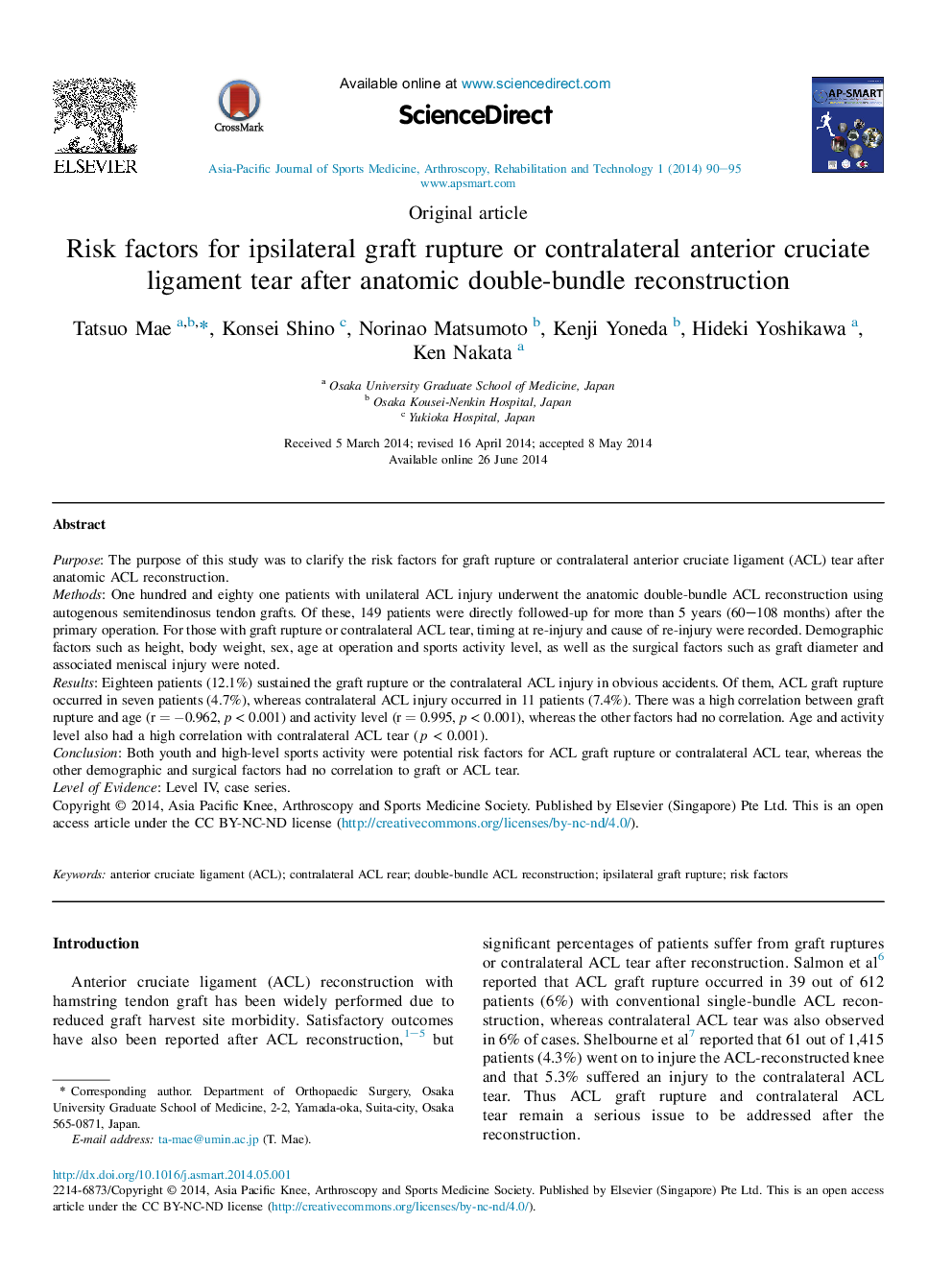| Article ID | Journal | Published Year | Pages | File Type |
|---|---|---|---|---|
| 2739535 | Asia-Pacific Journal of Sports Medicine, Arthroscopy, Rehabilitation and Technology | 2014 | 6 Pages |
PurposeThe purpose of this study was to clarify the risk factors for graft rupture or contralateral anterior cruciate ligament (ACL) tear after anatomic ACL reconstruction.MethodsOne hundred and eighty one patients with unilateral ACL injury underwent the anatomic double-bundle ACL reconstruction using autogenous semitendinosus tendon grafts. Of these, 149 patients were directly followed-up for more than 5 years (60–108 months) after the primary operation. For those with graft rupture or contralateral ACL tear, timing at re-injury and cause of re-injury were recorded. Demographic factors such as height, body weight, sex, age at operation and sports activity level, as well as the surgical factors such as graft diameter and associated meniscal injury were noted.ResultsEighteen patients (12.1%) sustained the graft rupture or the contralateral ACL injury in obvious accidents. Of them, ACL graft rupture occurred in seven patients (4.7%), whereas contralateral ACL injury occurred in 11 patients (7.4%). There was a high correlation between graft rupture and age (r = −0.962, p < 0.001) and activity level (r = 0.995, p < 0.001), whereas the other factors had no correlation. Age and activity level also had a high correlation with contralateral ACL tear (p < 0.001).ConclusionBoth youth and high-level sports activity were potential risk factors for ACL graft rupture or contralateral ACL tear, whereas the other demographic and surgical factors had no correlation to graft or ACL tear.Level of EvidenceLevel IV, case series.
